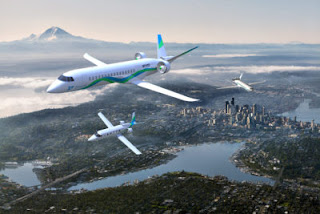Future of Carbon Free Flying

Airbus' Climate Neutral, Zero Emissions Flying Source: Airbus ZEROe France-based Airbus is a firm believer that the future of flying is zero emission aircraft, powered by hydrogen. The global aviation and aerospace company is working on three concepts for the world's first zero emissions commercial aircraft that Airbus wants to put service by 2035. The concepts represent different technological and aerodynamic design approaches to zero emissions flight. Each concept relies upon hydrogen as the primary power source. The three concepts are codenamed ZEROe. Carbon Neutral Flying Airbus says that it is committed to a future of zero emissions flights through the use of hydrogen as the power source. The three ZEROe concepts are designed to be the world's first climate neutral, zero emissions commercial aircraft for long distance and short haul transportation. The major goal is to end the commercial aviation industry&#













